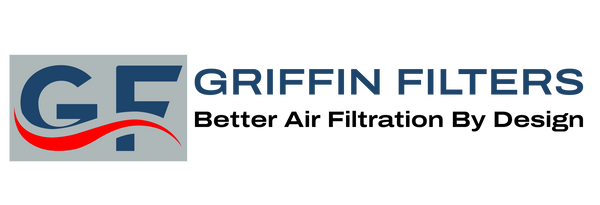Filter Media Treatments & Membranes
Treatments and Membranes
Surface Filtration

For more information, please see our page on Surface Filtration
ePTFE Membrane
A dominant choice for surface filtration for decades, ePTFE membranes provide a hugely effective means to decrease emissions while increasing dust collector efficiency. In fact, filters with ePTFE membranes are commonly introduced to older units to improve differential pressure and filtration efficiency.
Process A thin layer of ePTFE (expanded polytetrafluoroethylene) film is bonded to the surface of a filter material.
Benefits ePTFE provides excellent dust cake release, longer bag life, and increased filtration efficiency. However, abrasive dusts can wear down the membrane, reducing the ePTFE’s effectiveness over time. Check with your filter bag manufacturer if you think you have abrasive dusts.
Nanofibers
Gaining prominence over the last few years, nanofibers provide a state-of-the-art, effective means of surface filtration. They offer strength, increased efficiency, and prove to be a long-term investment for applications requiring surface filtration.
ProcessA web of finely weaved nanofibers are layered over conventional filter media.
Benefit The “webbing” creates a barrier that blocks dust but still easily releases the dust cake when pulsed. The finely weaved nanofibers leave minimal interstitial space through which dust can pass. This provides increased filtration efficiency and guards the filter from deep penetrating dusts that can lead to blinding or disrupted airflow through the baghouse.
Static Electricity
Static electricity in dust collections requires serious consideration. Many dusts—even some unexpected ones—have highly flammable characteristics, and a spark produced by static electric discharge could potentially ignite a gas stream full of dangerous dusts. When considering a static dissipating filter, be sure to carefully consider your circumstances and application needs. And speak with your filter manufacturer to ensure you get the best bag for your application.
Carbon Impregnation
Process Fibers are permeated with activated carbon particles.
Benefits The activated carbon particles make the filter media conductive, thereby reducing the risk of static discharge.
Stainless Steel or Carbon Linters
Process Carbon linters are needled into the fabric. Often with a copper ground wire.
Benefits Provides a conductive path over the entire surface area of filter.
Water / Oil Resistance
Hydro-Oleophobic
Process the filter is given a hydrophobic and oleophobic treatment.
Benefits The treatment increases resistance to moisture and oils, improves dust cake release.
Standard / Traditional Treatments
Singed
Process Our most popular treatment. The filter’s fibers are passed over a flame, which removes any “straggly” surface fibers.
Benefits The process provides a smoother, more uniform surface and easier dust cake release. Straggly fibers cling to the dust and make release more difficult.
Calendered / Glazed
ProcessHigh-pressure pressing of fabric via rollers. For glazing, the rollers are heated to melt the surface fibers to the body of the filter.
Benefits The process flattens the filter’s surface, making it smoother and more uniform to support easier dust cake release.
Acrylic Coated
Process The filter material is “immersed” in an acrylic resin.
Benefits The coating can provide better high-temperature or chemical resistances. Can also improve dust cake release and efficiency. Consult your filter bag manufacturor, though, because acrylic coatings can also disrupt airflow in some applications.
Flame Retardant
A chemical coating that reduces the chance of sparks igniting the treated filter. Please note that this does not make the filter fire proof – it only reduces the chance of fire.
